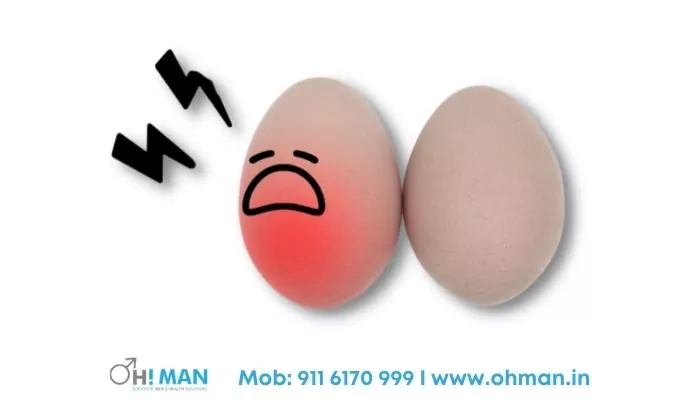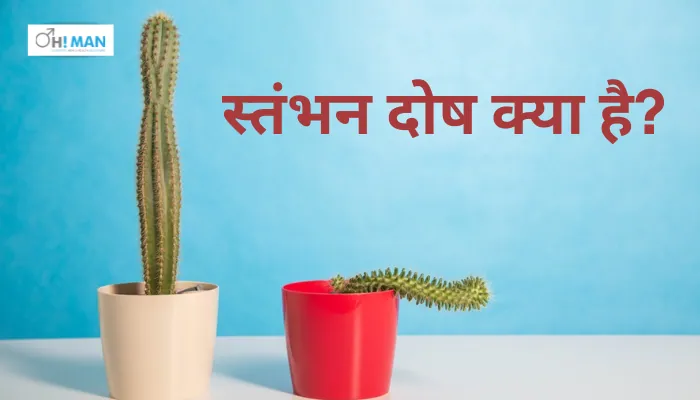Testicular Torsion: Causes, Symptoms & Treatment
Testicular Torsion: Causes, Symptoms & Treatment

Testicular torsion is an agonizing, serious disorder wherein the spermatic cord, the male testicle’s bloodstream, twists and stops supplying blood to the testis. It is a medical issue, and losing a testicle is possible if not treated quickly—within six hours. The reproductive systems that produce sperm and hormones are the testicles in the scrotum, a sac underneath the penis. Consequently, this condition may have an impact on your fertility.
Who Is More Prone To Testicular Torsion?
An uncommon yet incredibly dangerous disorder is torsion. One in 4,000 males below 25 can get affected by this condition. Torsion of the testicles may happen anytime, even before childbirth, although it most often occurs between the ages of 12 and 18. During the first year of infancy, the condition might affect the babies. Men over 25 might also be affected by this illness, although this is uncommon.
If you have previously had testicular discomfort that resolved on its own, it is likely to recur. Furthermore, the frequency of discomfort increases the likelihood of testicular injury.
Torsion of the testicles often occurs on its own.
Table of Contents
Testicular Torsion Symptoms
The rapid development of intense testicular discomfort is one of the key symptoms of testicular torsion. It may happen whether you’re standing or sitting, waking or sleeping. Further, the condition only affects one testicle and, more frequently, the left testicle. Out of 100, only 2 men have torsion in both the testes.
If you or your son exhibits any of these symptoms, consult the doctor as soon as possible.
- Testicular pain in one testicle occurs suddenly and does not result from an injury or accident.
- One-sided scrotum edema that is uncomfortable and noticeable to the naked eye.
- A noticeable lump in the testis
The testicles should be of similar size. So this might be a concern if one side soon gets bigger than the other. Also, the change in scrotum color, particularly redness or darkening, is a problem. Initially, there might not be swelling, but the scrotal skin would quickly swell and become red. You may also have nausea and vomiting.
Causes Of Testicular Torsion
Typically, no reason accompanies testicular torsion. However, testicular damage has been linked to it.
The disorder known as “bell clapper deformity” is also one of the testicular torsion causes. Since it is firmly connected to the scrotum, a testicle cannot rotate in most males. The testes of a boy born with bell clapper malformation suspend in the scrotum and may move freely, similar to a bell clapper. This may result in twisting. Further, this abnormality impacts both testicles. However, it is very unusual for torsion or twisting to occur simultaneously on both scrotum sides.
What Major Complications Can The Condition Cause?
Torsion of the testicles may lead to the following complications:
- Harm or death of the testicle. If testicular torsion doesn’t receive treatment within several hours, the blockage of blood flow might result in irreversible injury to the testicle. If the testicle has a severe injury, surgical removal is a must.
- Incapable of fathering children. In certain instances, injury or removal of a testicle might influence a man’s fertility.
Diagnosis Of Testicular Torsion
Your physician will question you to determine if your complaints are due to testicular torsion or anything else. A physical examination of the testicles, scrotum, belly, and groin commonly helps to detect testicular torsion.
Your doctor may also examine your reflexes by softly touching or squeezing the afflicted side of your inner thigh. Typically, this results in testicle contracting. So this reaction may not occur in the case of testicular torsion.
Frequently, medical tests are essential to confirm a diagnosis or find alternative causes of symptoms. For instance:
- Urine test: The doctor will check for infections.
- Scrotal ultrasound: This form of ultrasonography helps to examine blood circulation. An indication of testicular torsion is blood supply reduced to the testicle. However, ultrasonography may not always identify a decrease in blood flow; hence, the test may not establish testicular torsion.
If you have been experiencing discomfort for many hours and your physical examination shows testicular torsion, you may immediately undergo surgery without further testing. Postponing surgery could result in testicle loss.
Treatment For Testicular Torsion
The testicular torsion treatment requires surgery. However, an emergency department physician may attempt to unwind the chord manually. Even in such instances, surgery would be essential. During surgery, the surgeon will unwind the testicle and restore blood supply to the affected region. The surgeon will stitch it to the internal scrotal wall to avoid further torsions.
Typically, the surgeon will execute the operation via the scrotum, but they may occasionally need to create an entry through the groin. The doctor will also correct the undamaged testicle to avoid future torsion since a bell clapper is often present on both sides.
Further, the studies indicate that if the surgery is delayed for over six hours, testicle removal is a chance. Following 12 hours, this happens in over 75 percent of instances.
Unfortunately, babies with testicular torsion sometimes lose their testicles since the blood supply is cut off for too long, and the tissue dies (becomes infarcted). However, the doctor will still perform the surgery to remove the dead testicle. The doctor will stitch the other testicle so it doesn’t twist in the future.
Following Treatment
Following the testicular torsion treatment, it will take a while for the scrotum surgery to recover, no matter if the doctor hasn’t performed it. Additionally, you may require pain medications. In a few days or weeks, you may resume your normal activity. Further, it’s beneficial to refrain from demanding exercise or activities for a few weeks. The sutures surrounding the testicles will not be visible to you, and they needn’t affect you either. To prevent further twisting, there are sutures in place. Behavioral changes or medication cannot stop the other testicle from testicular torsion. Torsion won’t happen again after sewing stitches.
The testicle might shrink a little if it remains in its twisted state because potential permanent harm might result. Moreover, after removing one testicle, another could sometimes enlarge beyond normal.
Things to Do to Avoid Testicular Torsion
Some males acquire the trait of the testicles that could rotate the scrotum. Only surgery to surgically join both testicles to the interior of the scrotum may avoid testicular torsion in those who possess this trait.
Bottom Line
If you have any symptoms or feel pain, rush to the doctor, diagnose yourself, and get treated immediately – ideally within six hours. The testicle’s function might lose if not treated immediately.
Frequently Asked Questions
1. Can you still produce sperm with testicular torsion?
For typical male characteristics and fertility, just one testicle must be functional. Further, only one testicle can produce normal testosterone levels and sperm. However, studies reveal that approximately one-third of individuals decline sperm count following a torsion. Anti-sperm antigens may develop due to testicular torsion, affecting how sperm function and travel. According to certain studies, these males may have reduced fertility, although this is unusual.
2. Does testicular torsion cause permanent damage?
A testicle may suffer irreparable harm if obstructed blood flow doesn’t get medical attention many hours after testicular torsion. In case of badly damaged testicles, the doctor might surgically remove the testicles.
3. Does testicular torsion affect hormones?
Relying on the residual testosterone secretory capability of the testicles, a reduction in blood testosterone may be detected as testicular endocrine function decreases.
4. Can you have an erection with testicular torsion?
Blood flow restriction due to the condition cause the testicle to shrink or possibly get infected. The removal of one testicle does not affect sexual desire or erections.
5. Can testicular torsion fix itself?
Sometimes, testicular torsion may produce abrupt testicular discomfort that resolves independently. So this occurs when the testicle spontaneously bends and unwinds. Consult a medical professional immediately if this happens. Additionally, the doctor might notify that surgery is necessary to avoid a recurrence.
6. How long can a testicle survive torsion?
The testicle could only survive for around six to eight hours without a blood supply. Following that, the testicles get damaged and don’t work.



